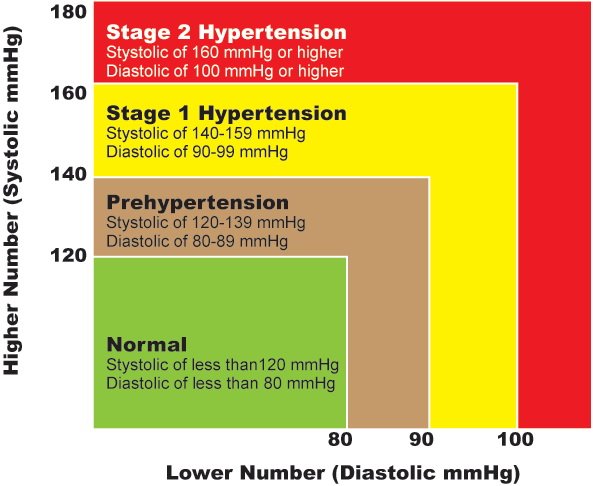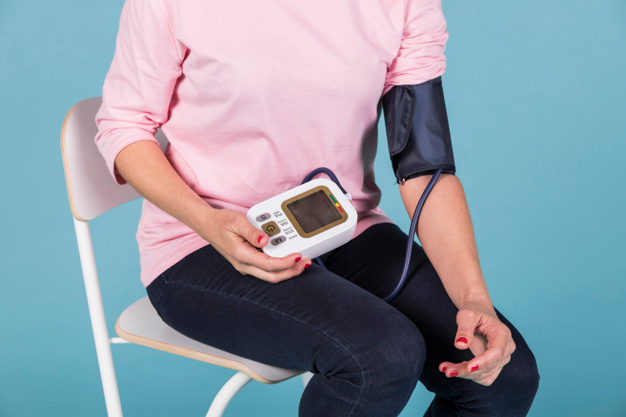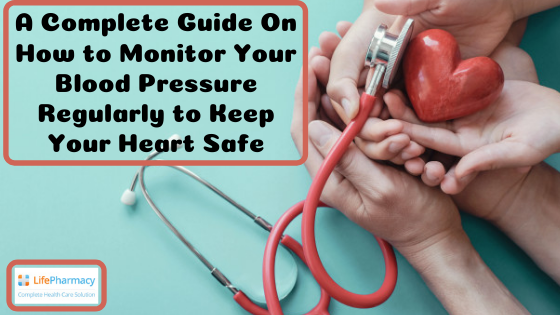The study shows that high blood pressure is one of the leading causes of death around the globe. That is why regular screening is a must. Especially, if you have a family history of heart problems or if you have been diagnosed for hypertension than it is advisable to monitor your blood pressure regularly at home. Keeping a note of your blood pressure reading helps you and your doctor to understand how well your body and its organs are functioning and decide upon the best treatment to control it.
Read on to know more on the highlights of the blog:
- What causes Blood pressure?
- With what do I measure my blood pressure at home?
- How can I be sure that my monitor is accurate?
- When to take your blood pressure?
- How to read blood pressure results?
- How to take your blood pressure at home?
What causes blood pressure?
The heart pumps blood into the arteries that carries the blood to different parts of the body. Blood pressure is the pressure of blood circulating within the arteries. The consistent increase in this pressure that is higher than the normal count may result in a diagnosis of high blood pressure which is clinically termed as Hypertension. The more blood your heart pumps and the narrower your arteries, the higher are your blood pressure level which may increase the chances of a stroke. Hypertension can be caused by weight gain, alcohol and sodium intake, older age or family history, and it can be controlled by making significant changes in your lifestyle.
With what do I measure my blood pressure at home?
To help keep a track on your blood pressure at home all you need to do is buy either a manual or a digital blood pressure monitor. But with so many products online how do you decide which one is the best for you. Just remember a few important points and buy what suits you best.
-
Accurate arm size:
The cuff size (circumference of your upper arm) is vital while selecting a blood pressure monitor. Because if you buy a cuff that is loose or doesn't sit properly on your arm, it may not give you correct reading. You may ask your doctor or nurse to help you with your cuff size before you buy the suitable one for you.
-
Choose upper arm over wrist arm monitors:
For monitoring pressure at home, it is generally recommended to buy an upper arm automatic cuff without a stethoscope from UK online pharmacy. For the simple reason is that the cuffs rest at the same level of the heart, making the reading process easy, quick and accurate when used at home.
-
Price and readability matters:
Do not opt for anything fancy or techno-savvy like a Bluetooth or sync with cloud feature, to store your readings. Although such features may sound cool it unnecessarily hikes the cost of the monitor and is not really worth. A pricey unit may not necessarily be the best and the most accurate, so it is better to buy the regular one approved by your physician that will work just fine. Also, make sure that the reading displayed is easy for you to read.
How can I be sure that my monitor is accurate?
The monitors that you buy from a UK online pharmacy or a drug store are usually fine, but it is always better to take it to the clinic and get it checked with your doctor’s monitor for accuracy. Besides that proper care and storage is necessary. Make sure that the tubing is not twisted when storing and is kept away from heat. After a certain period of time, you also need to check the tubing for leaks or cracks. Most of the monitors last for two to three years, but it is important to get it checked by a physician annually to make sure it still reads accurately.
When to take your blood pressure?
Monitoring your blood pressure regularly at home is key to the path of improved wellbeing. It is better to schedule your reading around your medication or relaxation time. Your first reading should be in the morning before you take your medication or eat any breakfast. And in the evening set an alarm for when you are relaxing with your family or watching your favourite soap. It is advisable to keep the same time each day for taking the readings. Take multiple reading and record, as in take two or three readings every one minute apart and record to make sure that the results are accurate.
How to read blood pressure results?
A blood pressure monitor gives two readings, the upper one is your systolic pressure and the lower one is the diastolic pressure. It is imperative to know how this reading can affect your body and save your life.
Systolic blood pressure (the upper number) – Measures the pressure that your blood exerts against the blood vessels or the artery wall when your heart beats.
Diastolic blood pressure (the lower number) – Measures the pressure that your blood exerts against the blood vessels or the artery wall when your heart rests between the beats.
Refer the below image to understand your systolic and diastolic blood pressure number:

Note: Seek for immediate medical help if you see the reading touching the red zone.
How to take your blood pressure at home?

Before measuring your BP every day it is essential to follow a few simple steps for getting accurate reading.
- Do not take medicines, eat or exercise before measuring your pressure.
- Avoid drinking alcohol, smoking, caffeine or tobacco at least 30 minutes prior to taking your reading.
- Use the bathroom to empty your bladder, as a full bladder may increase your pressure.
- Relax and be quiet for at least 5 minutes before measuring
- Sit comfortably with your legs uncrossed and back straight; your arm should be supported on a flat surface with the upper arm at your heart level. Place the cuff above the bend of your elbow and always use the same arm as there can be a difference in reading. If you are still not clear about how to use the monitor you can ask your doctor to demonstrate.
- Lastly do not forget to record your readings, make a note of multiple reading with date and time so that you can share your log with your doctor on your next visit. Incase if your BP reaches 180 or higher (systolic reading) or 100 and higher (diastolic reading) seek medical help immediately
Conclusion
High blood pressure is not a panic situation if proper care and medication are taken along with bringing significant changes in your lifestyle. Before we wrap up a few tips on how to live a healthy and fruitful life?
- Regular Exercise
- Avoid junk food and eat healthy and leafy vegetables and fruits
- Reduce your salt intake
- Quit smoking and limit your alcohol consumption.
- And finally do not stress and stay happy.






